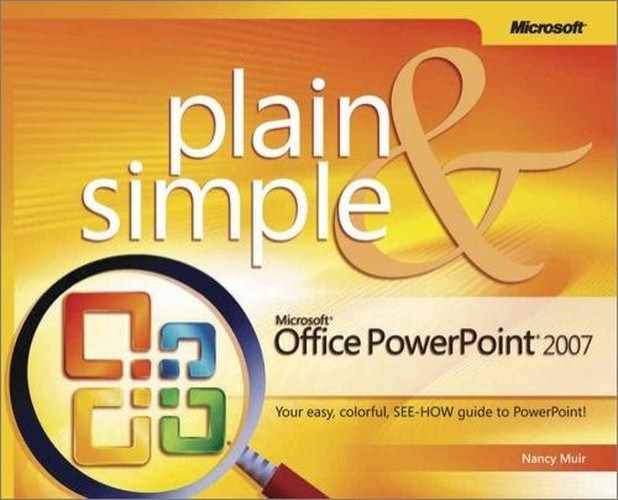You can apply custom animations to individual objects on your slide, from clip art and pictures to text placeholders. Animations include effects that make an object seem to appear on or disappear from your slide in Slide Show view in some fashion. For example, you might choose to have a heading appear letter by letter, or fly off your slide. The Motion Path category of animation allows you to actually have the object appear and move around a path you specify on your slide.
 Display a slide that has an object with an animation effect applied to it.
Display a slide that has an object with an animation effect applied to it. Click Custom Animation to display the Custom Animation task pane.
Click Custom Animation to display the Custom Animation task pane. Click on the animation you want to modify in the list.
Click on the animation you want to modify in the list.Tip
You can also click the arrow to the right of the effect in the list of effects and choose Effect Options from the menu that appears to make all these settings and more in a dialog box. If you select the option of starting an animation after another animation plays, you can use the Timing tab of this dialog box to specify a delay between the two animations, if you wish.
 Click the Start field and choose whether the effect plays when you click your mouse, along with any previous animation, or after the previous animation.
Click the Start field and choose whether the effect plays when you click your mouse, along with any previous animation, or after the previous animation. Click the next field, which will have a different name depending on the effect you have chosen, and make the appropriate setting. For example, if your effect shrinks your text, this Font Size field lets you choose the font size to shrink to. If your effect causes the object to spin, this Amount field lets you choose how many degrees around the object should spin.
Click the next field, which will have a different name depending on the effect you have chosen, and make the appropriate setting. For example, if your effect shrinks your text, this Font Size field lets you choose the font size to shrink to. If your effect causes the object to spin, this Amount field lets you choose how many degrees around the object should spin. Click the Speed field and choose how quickly the effect should play.
Click the Speed field and choose how quickly the effect should play.
Tip
If you reorganize slides, remember to check the Start setting you gave each. For example, if you wanted a slide to use a certain entrance effect that related to the contents of the slide before it, when you move that slide you may want to change the entrance effect to be relevant to its new predecessor.




